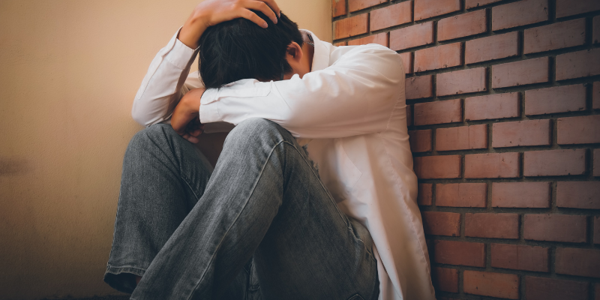What are the Differences Between Depression and Burnout
Stressed and unsure if it’s work burnout or depression? You’re at the right place. While they share similar mental and physical symptoms, burnout stems from workplace stress, whereas depression has broader causes. Knowing the difference helps guide proper diagnosis and treatment. Here’s how to tell them apart.
What is Burnout?
Burnout is characterized by physical, social, and emotional fatigue, often associated with occupational stress. However, various life factors can cause emotional exhaustion, such as caring for loved ones, raising children, or navigating life changes. Regardless of the underlying factors, many individuals experience decreased motivation, reduced efficiency, mental clarity issues, and job discontent. Common symptoms and signs of burnout include
- Feeling an intense urge to break free
- Demotivation or apathy
- Short temper or mood swings
- Mental exhaustion
- Decreased productivity or performance
- Social isolation or detachment
- Insomnia or restless sleep
- Overwhelm or crushing stress
- Sense of inadequacy or failure
- General ill-being
- Identity crisis
- Cynical outlook
Risk Factors for Burnout
Anyone can be susceptible to burnout, and individuals with high-stakes or emotionally taxing jobs are more likely to be affected. Insufficient downtime or relaxation contributes, particularly when managing multiple work and personal obligations. A lack of clear boundaries can aggravate these concerns. Struggle with an assertive refusal at suitable times or within designated work hours can be dangerous and cause significant risk.
Here are some risk factors for burnout
- Working excessively with no apparent boundaries between personal and professional life
- Lack of assistance at work, at home, or with caring responsibilities.
- Feeling criticized or scrutinized by superiors.
- Micromanagement
- Uncertain values at work
- Losing track of aims.
- Being pushed in multiple ways.
- Feeling continuously threatened at work
- Difficulty handling interpersonal interactions at work
- Frustration with "the system" or governmental bodies affecting daily labor
- Secondary and Vicarious Trauma Responses

What Is Depression?
Depression is characterized by persistent and profound sadness and pessimism. People may experience fatigue and critical self-perceptions, potentially leading to self-destructive or suicidal ideation. Depression is also frequently accompanied by a lack of enthusiasm or interest in previously enjoyable tasks. Some may withdraw socially or struggle with daily tasks, as depression can be overwhelmingly crippling and draining. Common signs and symptoms may include
- Sense of hopelessness
- Feelings of emptiness
- Guilt, little energy
- Observable behavior changes
- Irritability
- Lack of self-esteem
- Painful sensations
- General thoughts about death, dying, or suicidal ideas
Risk Factors for Depression
As with burnout, depression knows no boundaries, affecting individuals across all spectrums. However, some individuals are at higher risk of having depression, including individuals with a depressive family background, experiencing adverse life events, or co-existing psychological disorders. These elements can impact how people fight with stress, life changes, and emotions, potentially resulting in prolonged emotional distress.
Let's know some risk factors for depression
- Family history of depression
- Substance abuse
- Unaddressed emotional pain
- Sudden life changes
- Major life events (job, relationship)
- Traumatic childhood experiences

Burnout Vs. Depression: Key Differences
Depression and burnout have overlapping symptoms, including diminished enthusiasm, low mood, and attention deficits. However, the two conditions are distinct. Depression is a diagnosable condition defined by different symptoms, while burnout describes a persistent state of tiredness. Additionally, treatment approaches, symptom duration, and potential causes of depression are different from each other.
Symptom Duration & Intensity
Burnout and depression can last for an extended period. However, burnout has an unpredictable duration. In contrast, major depressive episodes require symptoms to persist for a minimum of two weeks. Typically, depression symptoms are more intense, but burnout can exacerbate depression, and conversely.
Treatment Options
A range of scientifically supported therapies are available for depression, such as psychotherapy, treatment, medication, ECT, neurofeedback, or TMS. Conversely, modifying daily habits(Such as removing or minimizing the stress trigger) In conjunction with therapy can aid in resolving burnout. Elimination of stress doesn't automatically enhance depression.
Diagnostic Criteria
Burnout is not a psychological disorder, and, as a result, it has no clear diagnostic guidelines. Depression encompasses a range of mood disorders, including major depression, persistent depression, seasonal affective disorder, premenstrual dysphoric disorder, and atypical depression. Distinct symptoms and evaluation criteria characterize each condition.

Can Burnout Lead to Depression?
Untreated burnout may contribute to depression. Burnout can be accompanied by lingering anxiety, disinterest, and despair. As a result, people may exhibit depressive symptoms such as impaired focus, emotional reactivity, exhaustion, and lingering self-blame. Treating burnout in its earlier stages is necessary so you will not face a most pressing future concern.
Prioritize Your Mental Health
Burnout and depression are both not good for health, and quick treatment is necessary to protect yourself from future emotional pain. If you're worried about your symptoms, seek guidance from a professional. It is better to consult a healthcare expert or therapist. The expert will clarify if you're experiencing depression, burnout, or another condition entirely.